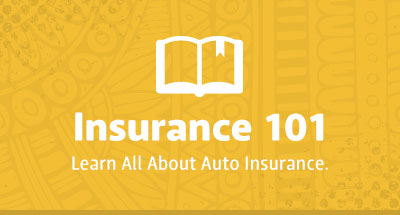Illinois Car Seat Laws

Whether you're driving the kids to school or heading out on a family road trip, it’s important to follow Illinois’ car seat laws to keep everyone safe.
Adhering to these regulations can also help you avoid traffic violations or increases in your auto insurance costs, due to infractions in your driving record.
Every state has different car seat requirements. At Illinois Vehicle Insurance Agency, LLC (Illinois Vehicle), we’re here to help you understand the current driving regulations in Illinois. Let’s discuss why these laws matter and the ways drivers can adhere to them.
Why car seat laws matter
Following car seat state regulations can help drivers in Illinois in various ways:
- Protecting children from harm or death while in a vehicle. Car seats may greatly decrease the risk of fatal injury for infants and toddlers.
- Avoid expensive traffic tickets and possible litigation
- Maintaining a clean driving record, which can influence your car insurance premiums
Illinois booster seat laws and car seat requirements
Illinois’ “Child Passenger Protection Act” dictates the rules for car seats and booster seats (also known as “child restraint systems”) in this state. Let’s see what this law requires based on the age of the child passenger.
All seats described below must meet the U.S. Department of Transportation’s federal safety standards for child restraint systems. As you shop around for a car seat for your child, you may notice a statement confirming the seat complies with these standards on the product’s description website, labels, or user manual.
Birth to age 2
The law for children two and under requires a back-facing child safety seat unless they are taller than 40 inches or weigh more than 40 pounds, according to the Illinois Secretary of State.
- Children should not ride in the front seat of the vehicle if the front of the car is equipped with airbags.
- Children using back-facing seats shouldn’t exceed any weight or height limits listed on the seats’ labels or user manuals.
- If the child is 40 or more inches tall or weighs 40 pounds and above, they may travel on the back seat with a lap belt only. A combination lap and shoulder belt will require the child to ride in a booster seat.
Ages 4 to 8
Parents or guardians should place their child in a rear-facing safety seat when traveling in a vehicle as long as possible or until they meet the safety seat’s weight and height limits.
- When a child is over these limits, they may use a forward-facing safety seat as long as they don’t exceed the seat’s height and weight limits.
- Forward-facing child safety seats should have a recommended five-point harness. This harness goes over the shoulders and hips and has buckles near the crotch and often the chest.
- If a child in this age group outgrows the forward-facing seat, they may transition into a booster seat.
- A booster seat must be used with the combination lap/shoulder seatbelt, also known as the 3-point seatbelt. This seatbelt has two straps going over the shoulder and lap, and is commonly seen in many vehicles.
- A child weighing over 40 pounds may travel in a back seat while wearing a seatbelt that goes over the lap only.
Ages 8 to 12
Children 8 to 12 years of age should continue to use a booster seat until they are tall enough to fit in the combination lap/shoulder seat belt.
- The lap/shoulder seat belt should go over the shoulders, not the neck or face. Similarly, the lap strap should go over the hip area, not the waist.
- The booster seat should not be used with a seatbelt going over the lap only.
Teenagers
- All drivers and passengers eight years of age or older, including teens, must wear seatbelts, according to Illinois law.
- A teenage driver in Illinois may get a ticket if their passengers don’t have a seatbelt. It’s their responsibility to ensure any child passengers have the appropriate seatbelt or child safety seat, according to the Illinois Secretary of State.
Common child car seat mistakes to avoid
Here are some of the common mistakes Illinois drivers should keep an eye out for:
- Installing the seat incorrectly: Different seats have different installation requirements. Parents and guardians should follow the car seat labels or user manual for proper instructions on how to install a child safety seat.
- Moving kids out of their booster seat too early: If your child is not tall enough, the 3-point seatbelt may injure them or not keep them secure in case of an accident.
- Using expired or second-hand car seats: Some manufacturers recall certain child safety seats. When buying one, check whether it adheres to federal safety standards.
- Not registering their car seat: You can register your child's car seat online or with the manufacturer. Registered car seat owners can get notifications on any recalls that take place.
Penalties for breaking car seat laws in Illinois
1. First-time offenders are charged with a petty offense and have to pay $75. The charge may be dismissed if the driver shows proof that they own a child restraint system and takes a course on how to install it properly.
2. Second or subsequent offenses will result in a $200. These offenses cannot be dismissed.
Having violations like these on your driver’s record may also lead to higher auto insurance premiums.
As you can see, Illinois car seat laws are there to protect families and children. Following the rules of the road will not only keep those vulnerable safe, but also help you maintain a clean driving record and avoid car insurance premium hikes.
Illinois Vehicle has been helping families in Chicago get affordable auto insurance. We understand the importance of driving responsibly and keeping your family safe.
For a free auto insurance quote from Illinois Vehicle, call 630-581-4805 or stop by one of our offices in Chicagoland.
Disclaimer:
This material is for general informational purposes only. The products, services, and discounts referenced herein are not available in all states or from all companies. All statements are subject to the terms, exclusions, and conditions of the applicable policy. In all cases, the actual language of the policy contract prevails. Coverage is subject to individual policyholders meeting the insurer's underwriting qualifications and state availability. Other terms, conditions, and exclusions may apply.






